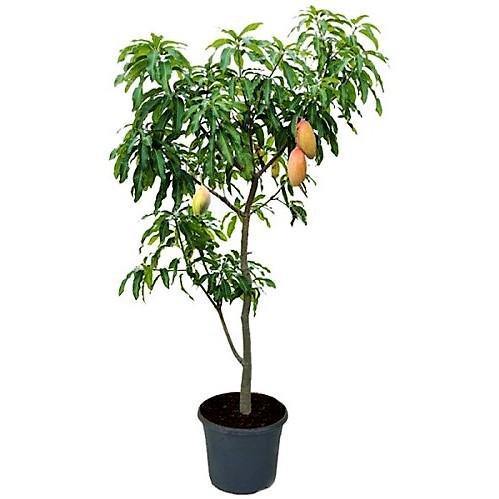Description
Mango, scientifically known as Mangifera indica, is a tropical fruit-bearing tree belonging to the Anacardiaceae family. Here’s an overview of the mango plant:
- Appearance: Mango trees are medium to large-sized evergreen trees that can reach heights of 10 to 40 meters (33 to 131 feet) tall, depending on the variety and growing conditions. They have a dense, rounded canopy of glossy, dark green leaves that are oblong or lanceolate in shape. The tree produces small, fragrant flowers in panicles, which develop into fruit.
- Fruit: The fruit of the mango tree is the mango, which is one of the most popular and widely consumed fruits in the world. Mangoes come in a variety of shapes, sizes, colors, and flavors, depending on the cultivar. They are typically oval or kidney-shaped with smooth, waxy skin that ranges in color from green to yellow, orange, red, or purple when ripe. The flesh of the fruit is juicy, sweet, and aromatic, with a rich, tropical flavor. Mangoes contain a single, large seed or stone in the center.
- Cultivation: Mango trees thrive in tropical and subtropical climates with hot, humid weather and well-drained soil. They are native to South Asia but are now cultivated in many other parts of the world with suitable growing conditions, including India, Southeast Asia, Africa, the Caribbean, and parts of Central and South America. Mango trees require full sunlight and regular watering, especially during the flowering and fruiting stages. They are typically propagated from seeds, grafting, or air-layering.
- Varieties: There are thousands of mango cultivars, each with its own unique characteristics in terms of fruit size, shape, color, flavor, and ripening time. Common mango varieties include Alphonso, Kent, Tommy Atkins, Haden, Ataulfo, and Keitt, among others. Some mangoes are best eaten fresh, while others are more suitable for processing into juice, puree, chutney, or dried mango slices.
- Uses: Mangoes are not only delicious but also nutritious, containing vitamins, minerals, and antioxidants. They are a good source of vitamin C, vitamin A, vitamin E, potassium, and dietary fiber. Mangoes can be eaten fresh as a snack or added to salads, smoothies, desserts, and savory dishes. They are also used to make mango juice, nectar, ice cream, sorbet, and other culinary creations.
- Harvesting: Mangoes are typically harvested when they are fully ripe, as they do not ripen further once picked. Ripe mangoes should yield slightly to gentle pressure and have a sweet fragrance at the stem end. Mangoes can be harvested by hand or using long-handled picking poles, and care should be taken to avoid bruising or damaging the fruit during harvest.
Overall, the mango plant is a valuable and beloved tree, prized for its delicious fruit, ornamental beauty, and cultural significance in many tropical regions. Whether grown in home gardens, orchards, or commercial plantations, mangoes are a cherished and iconic fruit enjoyed by people around the world.
Reasons to buy from Plantssouq
– Fast Delivery
– Whatsapp Us On :0566670322 Dubai
- – Support 24/7 :
* Phone/whatsup:0566670322
* Email : [email protected]






Reviews
There are no reviews yet.